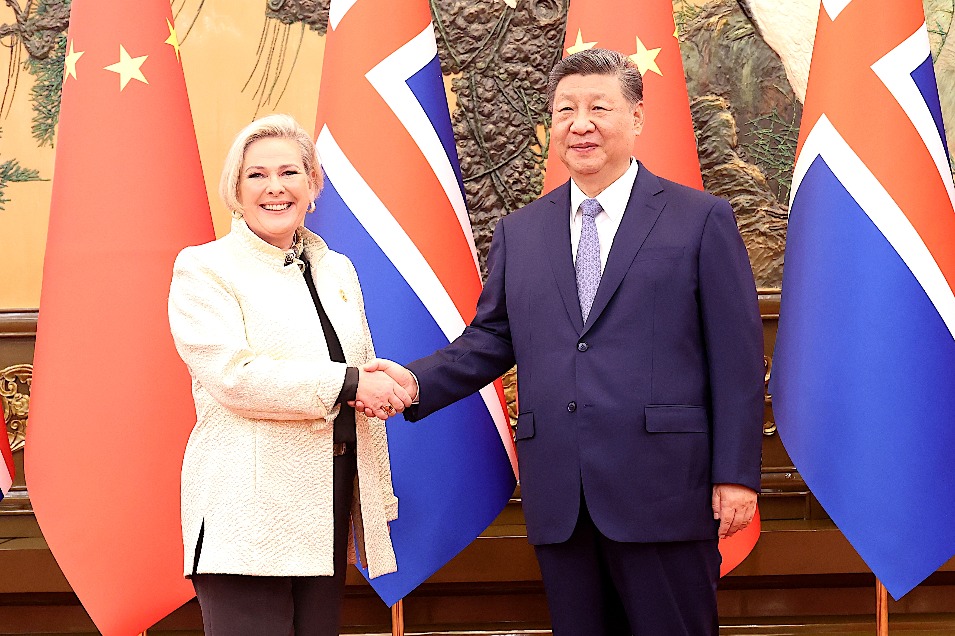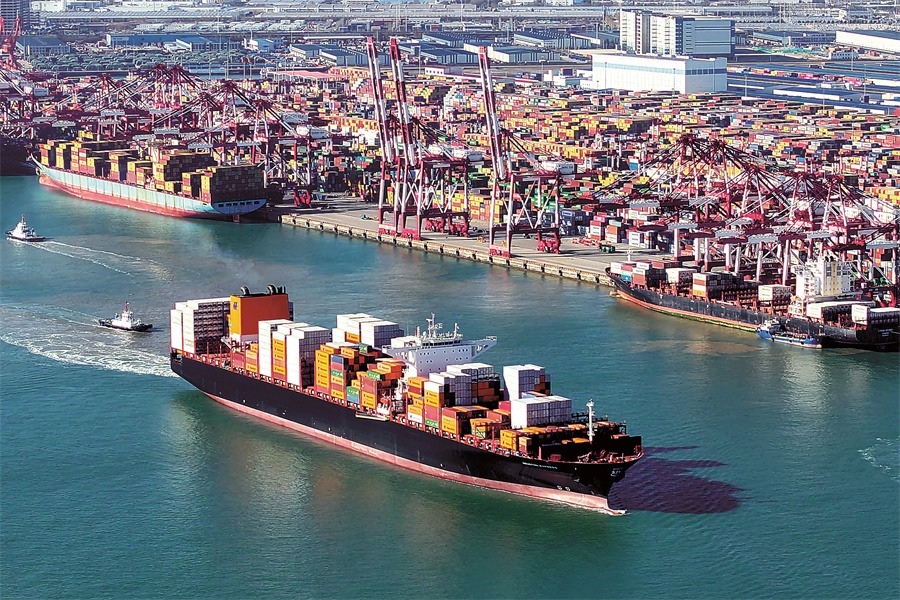Be mindful of the risks


Emerging economies must be alert to prevent and defuse the negative spillover effects of the US' aggressive macroeconomic policies
The outbreak of the novel coronavirus in 2020 took a heavy toll on the world economy, as evidenced by the dismal global GDP figures. According to the International Monetary Fund Policy Tracker, 187 economies have adopted macro policies to address the pandemic-induced recession. However, the output gaps created by the pandemic are different from those caused by the subprime mortgage crisis in 2008-09, not least in terms of severity.
According to the IMF's World Economic Outlook in October 2020, the output gaps of the G7 countries, other developed economies and the eurozone were 5.80, 4.94 and 2.84 percentage points respectively in 2009, and 3.57, 3.80 and 5.08 percentage points respectively in 2020.Except for the eurozone, the G7 countries and other developed economies in 2020 had much narrower gaps than in 2009.
In addition, the gaps are narrowing at diverging speeds. It took a long time for the output gaps caused by the 2009 financial crisis to regain lost territory. It was not until 2018 that the output gaps of the G7, other developed economies, and eurozone turned positive at 0.20, 0.24 and 0.18 percentage points respectively. In other words, it took nearly 10 years for the developed economies to return to their potential output, from the deep recession in 2009 to the slight positive gap in 2018.
According the IMF forecast, the G7 countries and the eurozone will reverse the pandemic-induced recession and reach potential output in 2024 or 2025, which is about half the time compared with the previous recession.
Due to its aggressive fiscal and monetary policies, the United States may outpace other developed economies in bridging the output gap, and it may realize its potential output faster than predicted by the IMF given US President Joe Biden's huge infrastructure investment plan. Pressing down hard on the gas pedal and bent on achieving its goals, the policies of the US Treasury Department and the Federal Reserve in response to the "high-pressure economics" will likely make the US output gap shrink even faster than anticipated.
The output gap of the eurozone as a whole rose to 5.08 percentage points in 2020 due to relapses in the pandemic situation and the lack of a unified fiscal policy. Although Germany's gap stood at 3.46 percentage points, the output gaps of France and Italy rose to 5.64 and 5.41 percentage points respectively and have narrowed only slightly so far in 2021.The eurozone output gap is narrowing at a slower pace and on a smaller scale than that of the United States, although it has adopted zero or even negative interest rates and the European Central Bank has made large-scale purchases of securities, which has boosted financing availability.
The US Dollar Index should be anything but weak in 2021, as component economies represented by the euro, Japanese yen, British pound and Canadian dollar are seeing their output gaps closing less than that of the US. The index is expressed in relative terms, so the fact that the US dollar is strong relative to the euro and yen doesn't mean it is strong by itself.
According to the recent IMF WEO, the pandemic will cause less output losses in advanced economies than in emerging markets, developing and low-income economies in the medium term (four years), compared with the pre-pandemic forecast. This also indicates that developing and low-income economies as a whole are slower than developed economies in closing the gap.
In the non-financial sector, for buffering the impact of the pandemic, all economies have a smaller credit-to-GDP gap (the gap between the credit-to-GDP ratio and its long-term trend) or a wider positive gap, which shows that credit has increased relative to GDP. Considering the debt levels and narrowing output gaps of different economies, we conclude that economies across the world will diverge in terms of economic cycles during the post-pandemic recovery-there will be divergences among developed economies, among emerging economies, and between developed economies and some emerging economies. Against the backdrop of financial globalization, more foreign-currency denominated debts will lead to higher currency mismatch risks exacerbated by divergent economic cycles and cause disorderly cross-border capital flows, which may lead to exchange rate overshooting or even potential currency crises. Obviously, there are potential systemic risks, in particular, for economies with current account deficits and large foreign debts.
The US has adopted aggressive macro policies to close its output gap quickly, relying on its dominance in the international monetary system dominated by the US dollar. Increased US imports have boosted the aggregate demand of the global economy, which is a positive spillover, but emerging economies should be more mindful of the external debt risks caused by rising interest rates on the heels of the narrowing US output gap and exchange rate fluctuations triggered by cross-border capital flows.
It is thus an immediate concern for emerging economies to prevent and defuse the negative spillover effects of US macro policies and financial markets. The basic approach is to step up macro-prudential regulation and address as soon as possible debt problems that may pose potential systemic risks, while ensuring that macro-prudential regulation does not undermine funds availability for the real economy and a sustainable recovery.
The author is a research fellow of the National Academy of Development and Strategy at Renmin University of China and the vice-president of the School of Economics at Renmin University of China. The author contributed this article to China Watch, a think tank powered by China Daily. The views do not necessarily reflect those of China Daily.
































